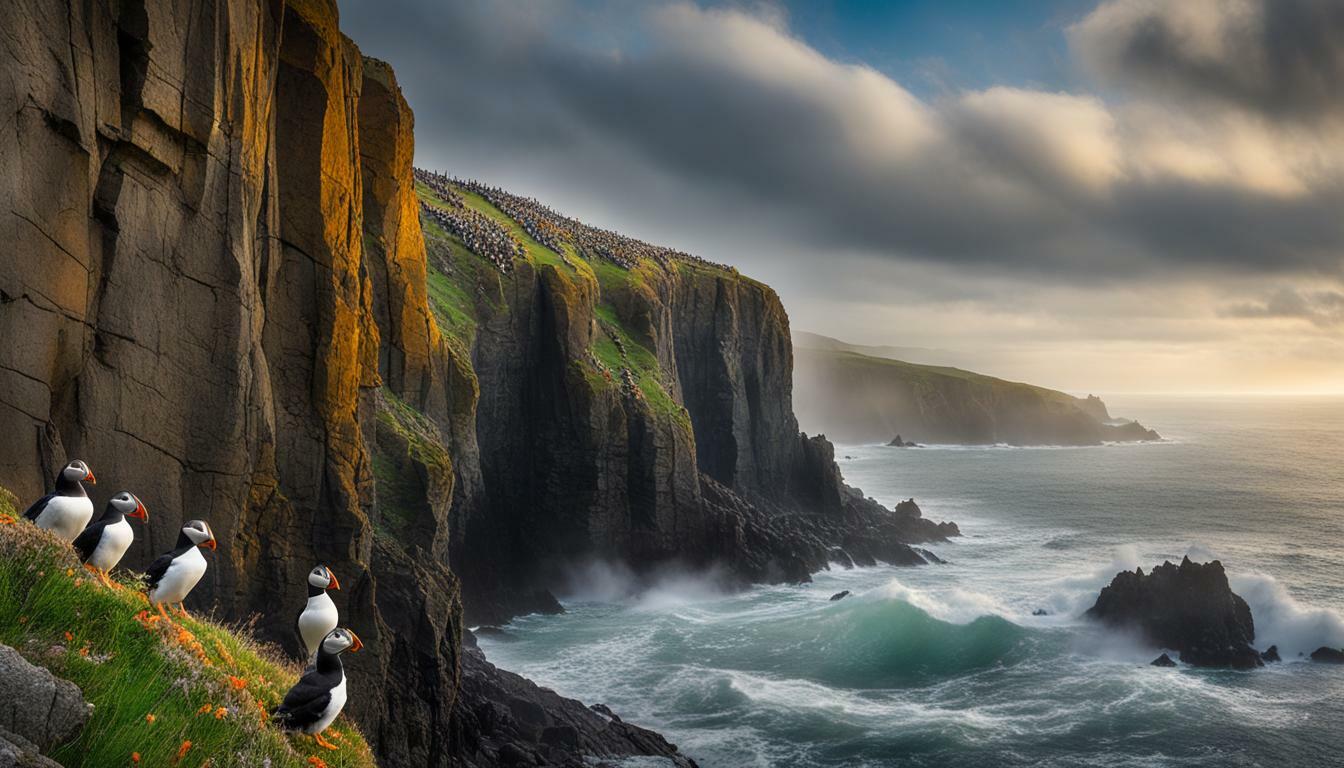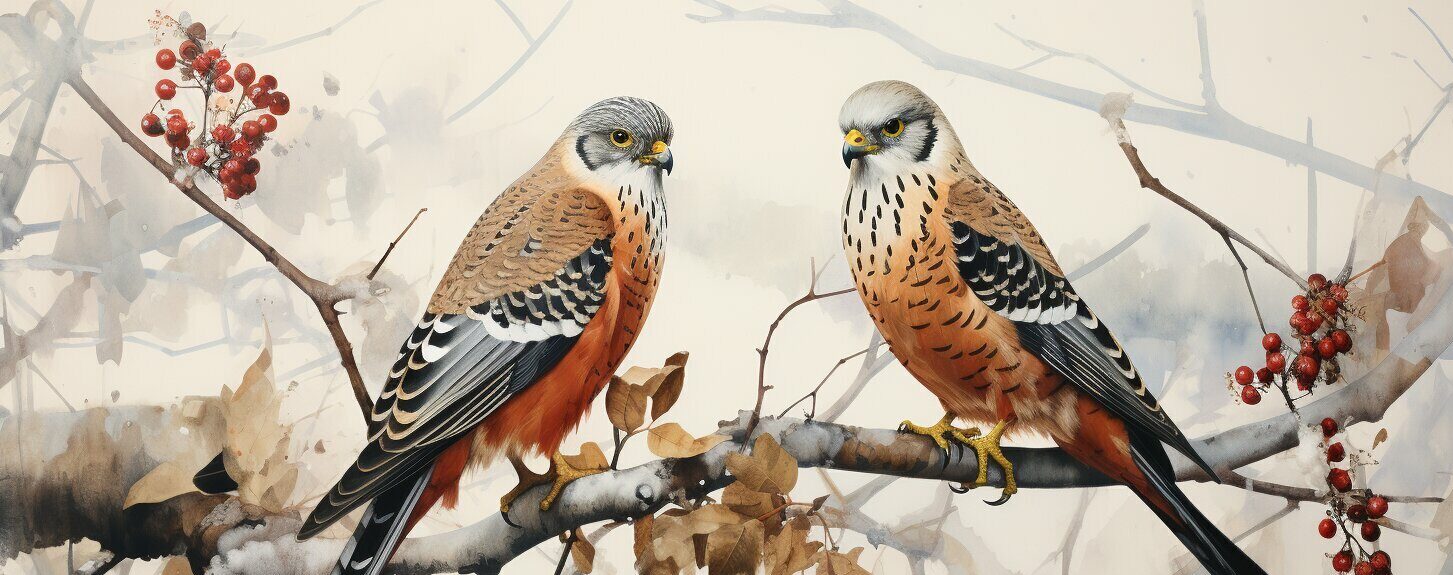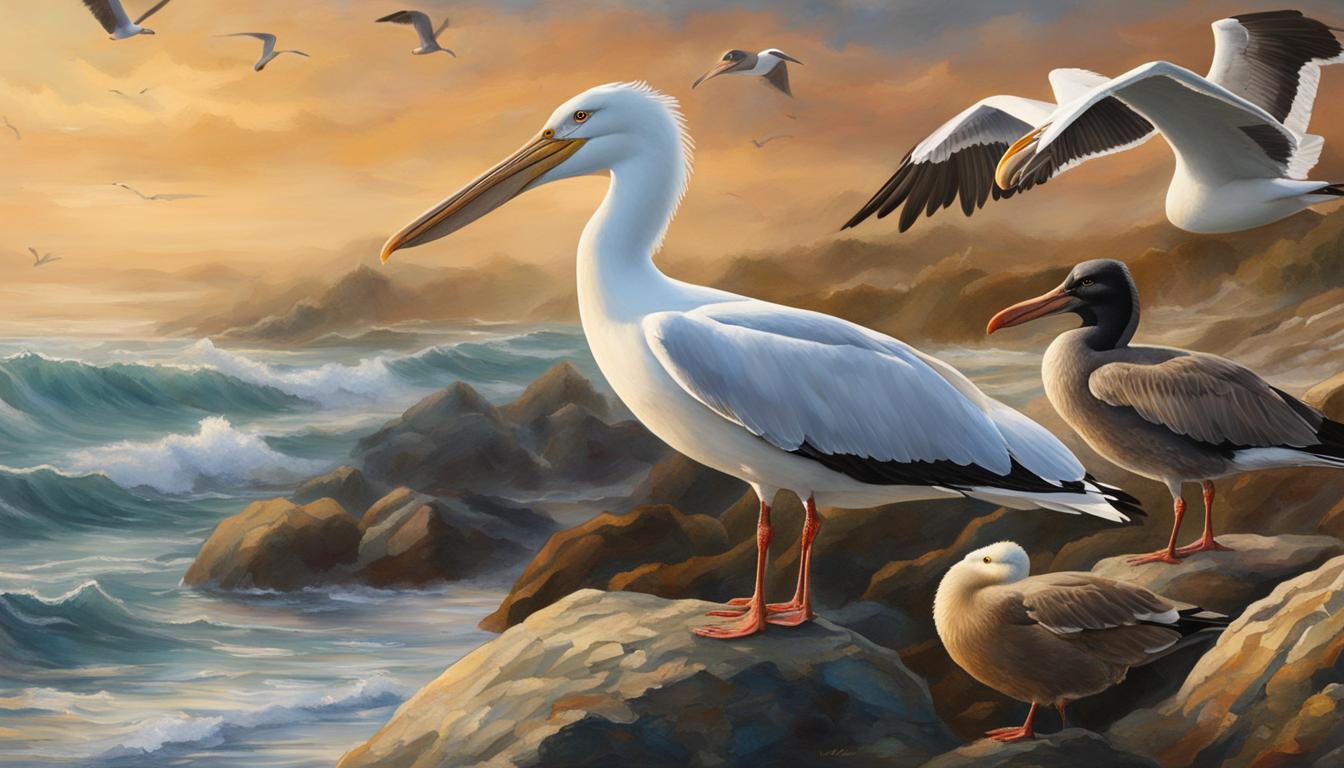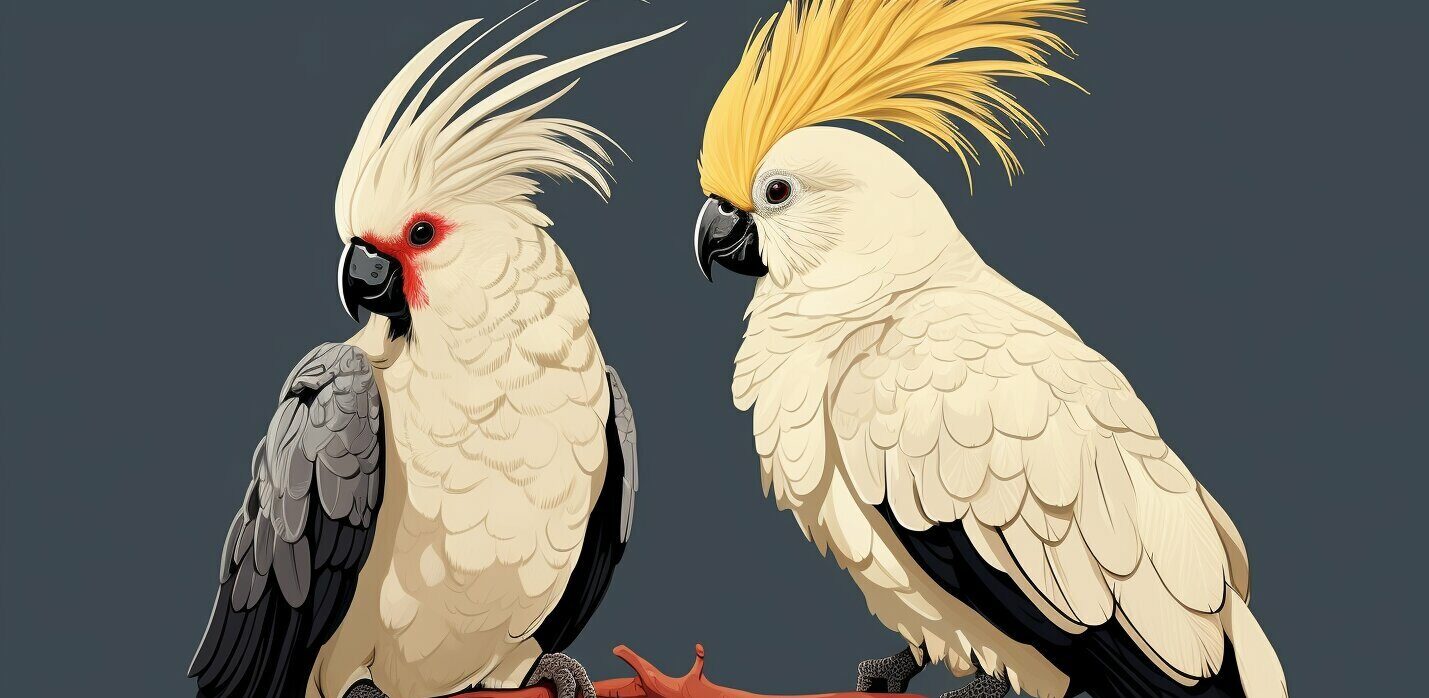Seabirds are a vital part of the coastal ecosystem, playing an important role in nutrient cycling and population control. Among these birds are the cliff dwellers, such as puffins and murres, that make their homes on the rocky cliffs and ledges of the coast.
These remarkable birds have adapted to life on the edge, with behaviors and physical characteristics that enable them to thrive in their rocky habitats. In this article, we will explore the unique aspects of puffins and murres as cliff dwellers, highlighting their ecological significance and the importance of preserving their habitats.
Key Takeaways:
- Puffins and murres are cliff-dwelling seabirds that have adapted to life on rocky coastal cliffs and ledges.
- These birds play an important role in the coastal ecosystem, including nutrient cycling and population control.
- The preservation of their rocky coastal habitats is critical for the survival of these unique and important birds.
Puffin Behavior
As cliff-dwelling seabirds, puffins have adapted unique behaviors to thrive in their rocky habitats. One of their most notable behaviors is their nesting habit. Puffins dig burrows into the cliff side where they lay their eggs and raise their young. These burrows provide protection from predators and harsh weather conditions.
Puffins are also social birds and often gather in large colonies on cliffs. They use a variety of vocalizations and physical displays to communicate with each other and establish social hierarchies. During the breeding season, males will often bring gifts of fish to their mates as a form of courtship.
When it comes to feeding, puffins are well adapted to the marine environment. They have a specialized bill that allows them to catch fish by diving deep into the water and using their wings to swim. They primarily feed on small fish such as sand eels and herring, but will also consume squid and crustaceans.
Despite their unique behaviors, puffins face numerous threats to their survival. Climate change, overfishing, and pollution are all factors that can impact their food sources and nesting habitats. Conservation efforts such as habitat protection and monitoring of breeding populations are essential to their continued survival.
Murre Breeding Habits
Murres are cliff-dwelling seabirds that breed in large colonies on rocky coastal cliffs. They are monogamous birds that breed annually, with males and females sharing parental duties.
During the breeding season, murres establish courtship bonds and select nest sites. They lay one egg per breeding season, which is incubated for about a month. The incubation period typically begins in late May or early June.
Once the egg hatches, the chick is cared for by both parents, who take turns feeding it. Murres are among the few birds that can recognize their chicks by voice alone, as the crowded colony may make it difficult to locate them.
Murres have unique breeding behaviors that set them apart from other cliff-dwelling seabirds. For example, they lay their eggs directly on the rocky surfaces of cliffs, without building a nest. This adaptation allows them to fit more birds into the limited space available on the cliff.
Overall, murres have a challenging breeding cycle due to their harsh cliff habitat and the fact that their breeding season coincides with the unpredictable weather conditions of the northern coastlines where they reside.
Puffin vs. Murre Nests
While both puffins and murres are cliff-dwelling seabirds, they have distinct differences in their nesting habits and structures.
Puffins are known for their burrow nests, which they dig into the soil or find in crevices in the cliffs. These nests typically have a narrow entrance and a spacious chamber for incubating eggs and raising chicks. Puffins may also use rock crevices or abandoned burrows from other seabirds as their nests.
On the other hand, murres nest on rocky ledges and cliffs, often in large colonies. Their nests are simple scrapes in the soil or on bare rock, with no protective chamber or structure. However, murres are highly protective parents and are known to fiercely defend their nests and chicks from predators.
| Puffin Nests | Murre Nests | |
|---|---|---|
| Location | Ground level, in soil or rocks | Rocky ledges and cliffs |
| Structure | Burrow with narrow entrance and spacious chamber | Simple scrape in soil or on rock |
| Adaptations for Protection | Hidden entrance, use crevices or abandoned burrows | Fierce defense by parents |
Despite their differences, both puffin and murre nests are adapted to the rocky coastal habitats where they thrive as cliff dwellers.
Puffin Diet
One of the key factors that enables puffins to thrive in rocky coastal habitats is their unique diet. Puffins are specialized hunters, feeding primarily on small fish such as sand eels and capelin.
Interestingly, puffins are able to carry an impressive number of fish in their beaks due to a specialized hinge mechanism that allows their beaks to open widely. They are also able to dive to depths of up to 200 feet in search of food.
However, puffin populations have recently been declining due to oceanic changes impacting the availability of their primary prey. Conservation efforts are crucial in preserving their cliff habitats and ensuring the survival of these fascinating birds.
Murre Conservation Status
Murres are an important part of the coastal ecosystem as cliff-dwelling seabirds. Unfortunately, due to factors such as overfishing and climate change, their populations have declined dramatically in recent years. As a result, murres are now classified as a species of special concern in many areas, including the Pacific Northwest.
Conservation measures have been put in place to protect murre populations and their cliff habitats. In some areas, fishing restrictions have been implemented to allow for the recovery of fish populations that murres rely on for survival. Additionally, efforts have been made to reduce human disturbance and maintain the quality of their nesting sites.
| Threats to Murre Populations | Conservation Efforts |
|---|---|
| Overfishing and depletion of fish populations | Fishing restrictions, habitat restoration |
| Climate change and ocean acidification | Research, monitoring, and adaptation strategies |
| Human disturbance and habitat destruction | Regulations, enforcement, and habitat management |
It is important to continue monitoring murre populations and their habitats to ensure their long-term survival. By taking action to protect cliff-dwelling seabirds like the murre, we can help preserve the health and diversity of our coastal ecosystems for future generations.
Ecological Significance
As cliff-dwelling seabirds, puffins and murres play a crucial role in the coastal ecosystem. These birds are important indicators of marine health and their presence or absence can help scientists better understand changes in the ecosystem.
Puffins and murres are also important nutrient cyclers, helping to transport nutrients from the ocean to the cliffs where they nest. Their guano, or excrement, provides a rich source of nutrients for plants and other organisms in the surrounding ecosystem.
Additionally, puffins and murres help to control populations of fish and other small marine organisms. Their predatory habits keep these populations in check, preventing overconsumption of resources and maintaining a healthy balance in the ecosystem.
Their presence as cliff dwellers also provides protection for other species. Puffins and murres are often preyed upon by larger birds and mammals, and their presence on the cliffs can discourage these predators from attacking other vulnerable species in the area.
Overall, the ecological significance of puffins and murres as cliff dwellers cannot be overstated. Their unique adaptations and behaviors make them important contributors to the coastal ecosystem, and their preservation is critical for the health of the ecosystem as a whole.
Conclusion
In conclusion, it is evident that puffins and murres are fascinating cliff-dwelling seabirds with unique characteristics and behaviors that allow them to thrive in their rugged coastal habitats. While they may share similarities, such as their reliance on marine organisms and parental care, there are also significant differences between the two species, including their nesting habits and structures.
It is crucial that we prioritize the conservation of these captivating cliff dwellers and their rocky coastal habitats. The preservation of these areas is not only crucial for the survival of puffins and murres but also for maintaining the ecological balance of coastal ecosystems.
As we continue to learn more about the vital importance of these seabirds, we must recognize the need for stronger conservation efforts. By taking action to protect their habitats, we can ensure that future generations have the opportunity to appreciate and learn from these incredible cliff dwellers.
 Skip to main content
Skip to main content


